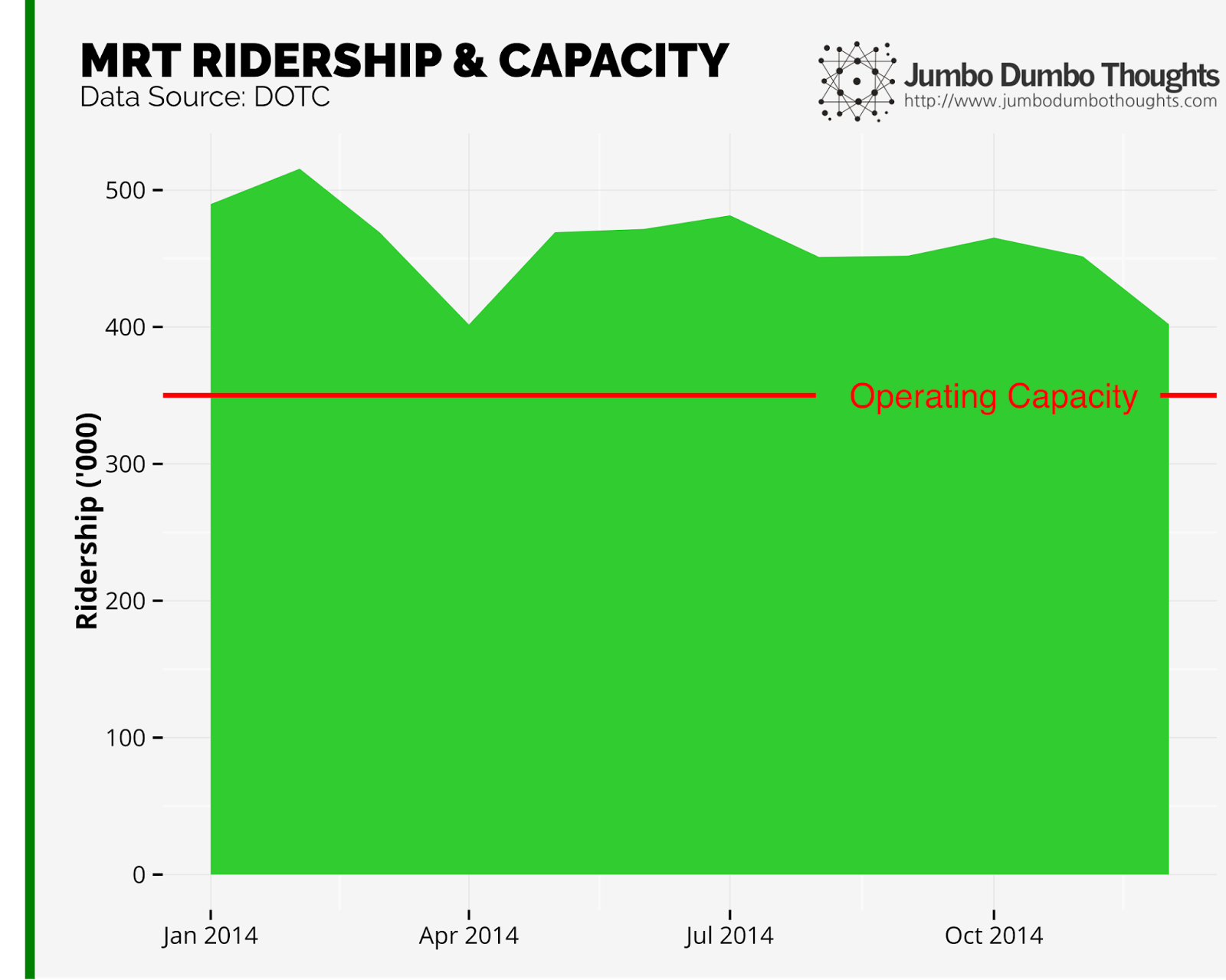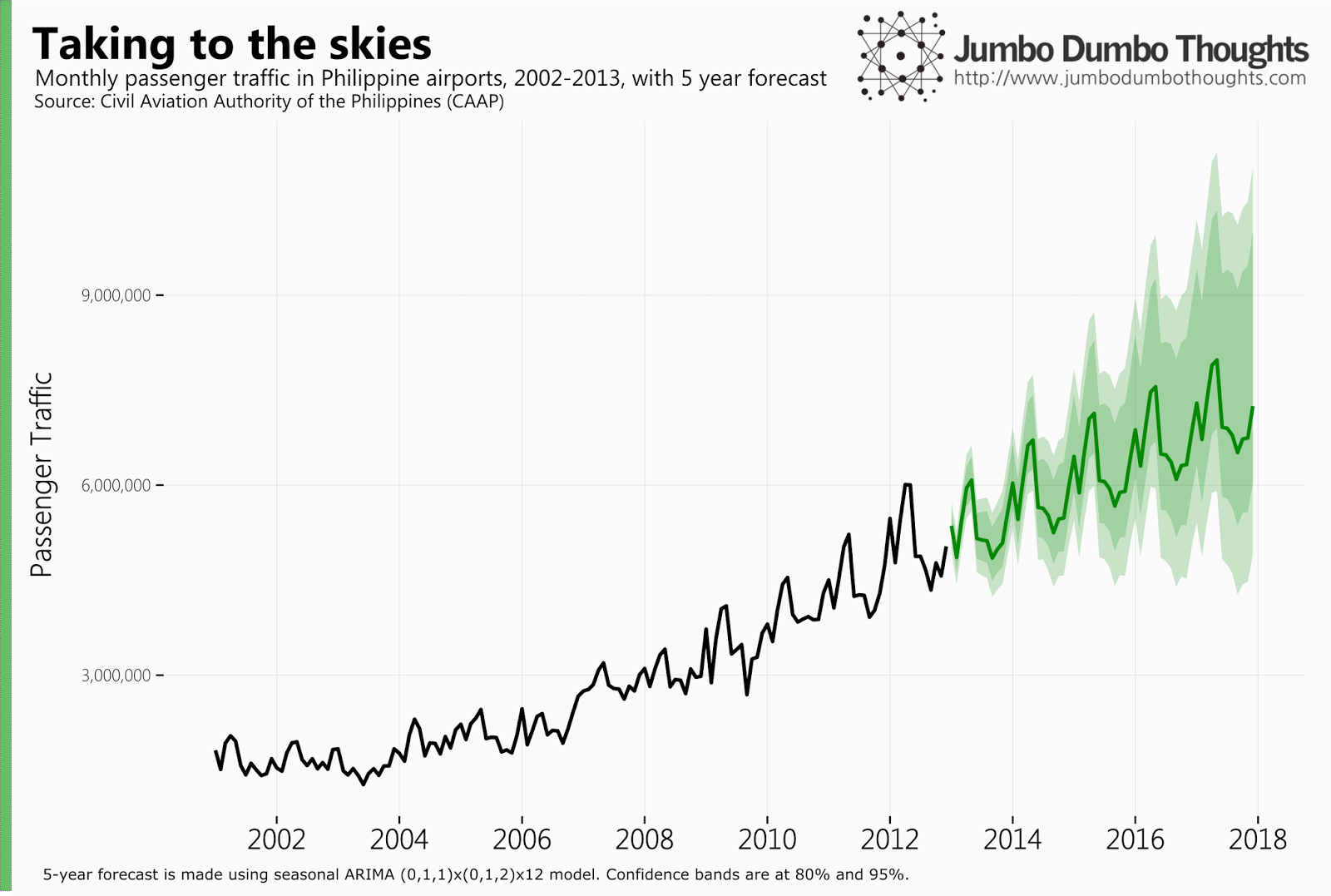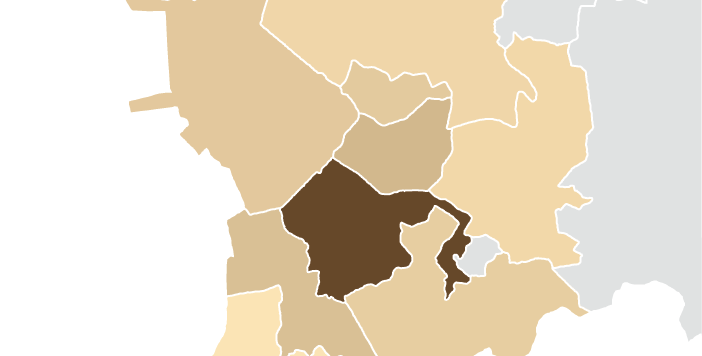Articles
An article is a finished piece of work, likely the result of a data analysis or a viewpoint that's gone through multiple iterations of feedback and refinement. It's intended to be the traditional blog post.
On the MRT: A Capacity Conundrum
This article was also featured on Rappler and GMA News Online!
After more than 16 years in operation, it is clear that the MRT isn’t anymore what it once was. What used to be an enduring symbol of progress and technological innovation is now just an uncomfortable, accident-prone, and unfortunately, inevitable mode of transport. Operating at the level of about 500,000 passengers per day on a capacity of only 350,000, transport secretary Abaya says the trains continue to be worn down from the excessive burden.
Too close for comfort

MRT Ridership - Continuously operating at above capacity is sure to bring undue wear and tear to a system that hasn’t seen any major overhaul since it was built.
I’ve written before on the state of train lines in the capital, but new data from the Department of Transportation and Communications (DOTC) has surfaced, allowing us a more detailed look at the inner workings of the historic MRT.
On Airline Agitation: Flight networks and what Facebook comments say about customer satisfaction

In recent years, the Philippine aviation industry has experienced rapid growth, with more and more Filipinos getting to experience air travel for the first time. Not only that - the industry is in flux - fierce competition has caused churn and consolidation among the key players. We can take a closer look by analyzing their current flight networks, as well as performing sentiment analysis on comments on the airlines' official Facebook pages.
On Benford's Law: Determining import fraud risk using customs data

If you were to think of the first digits of a group of related variables, say, tax payments, it would be intuitive to think that the digits would more or less be evenly distributed between 1 to 9. However, it turns out that the exponential nature of growth makes it such that the first digits are more likely to be 1’s than any other number.
On Coffee Coverage: Starbucks store density in Metro Manila

Some people just can’t start the day without having a cup of coffee. By taking a look at the city-specific distribution of Starbucks stores around Metro Manila, we can see where the coffee guzzlers are located.
On Taxes versus Sales: How large is government compared to publicly-listed corporations?

Have you ever wondered how government finances compare to the largest publicly-listed corporations in the country? When the financial bulk of private entities outweigh that of the public purse, it may give rise to undue influence over regulation and legislation. Data from public company disclosures and Department of Finance can help us investigate the matter.
On Imperial Manila, Modernization Failure, and Comparative Advantage: A close look at regional accounts
With traffic jams and port congestion an all-too-common sight in the Philippine capital, there is growing sentiment that development should be moved away from the metropolis and into other regions. What does the data, particularly regional accounts from the Philippine Statistics Authority, have to say?

(Photo: Storm Crypt/Flickr, CC BY-SA 2.0)
On the Effectiveness of Higher Sin Taxes (2014 Q2 Update): Losing Steam?
We update our assessment on the effectiveness of sin taxes with fresh national accounts data for the second quarter of 2014, and learn that sin taxes may be losing steam - smokers and drinkers may be having a hard time kicking the habit.

How are higher sin taxes faring a year and a half after their implementation? (Photo: Fried Dough/Flickr, CC BY 2.0, cropped)
When we first covered the new sin taxes in 2013, we focused on its effect on household consumption of alcohol and cigarettes, and subsequently updated it to reflect the 2013Q3 stats. Now that sin taxes have been in effect for roughly a year and a half and has even kicked it up a notch, let’s review national accounts data from the Philippine Statistics Authority (then NSCB), to see how it has fared.